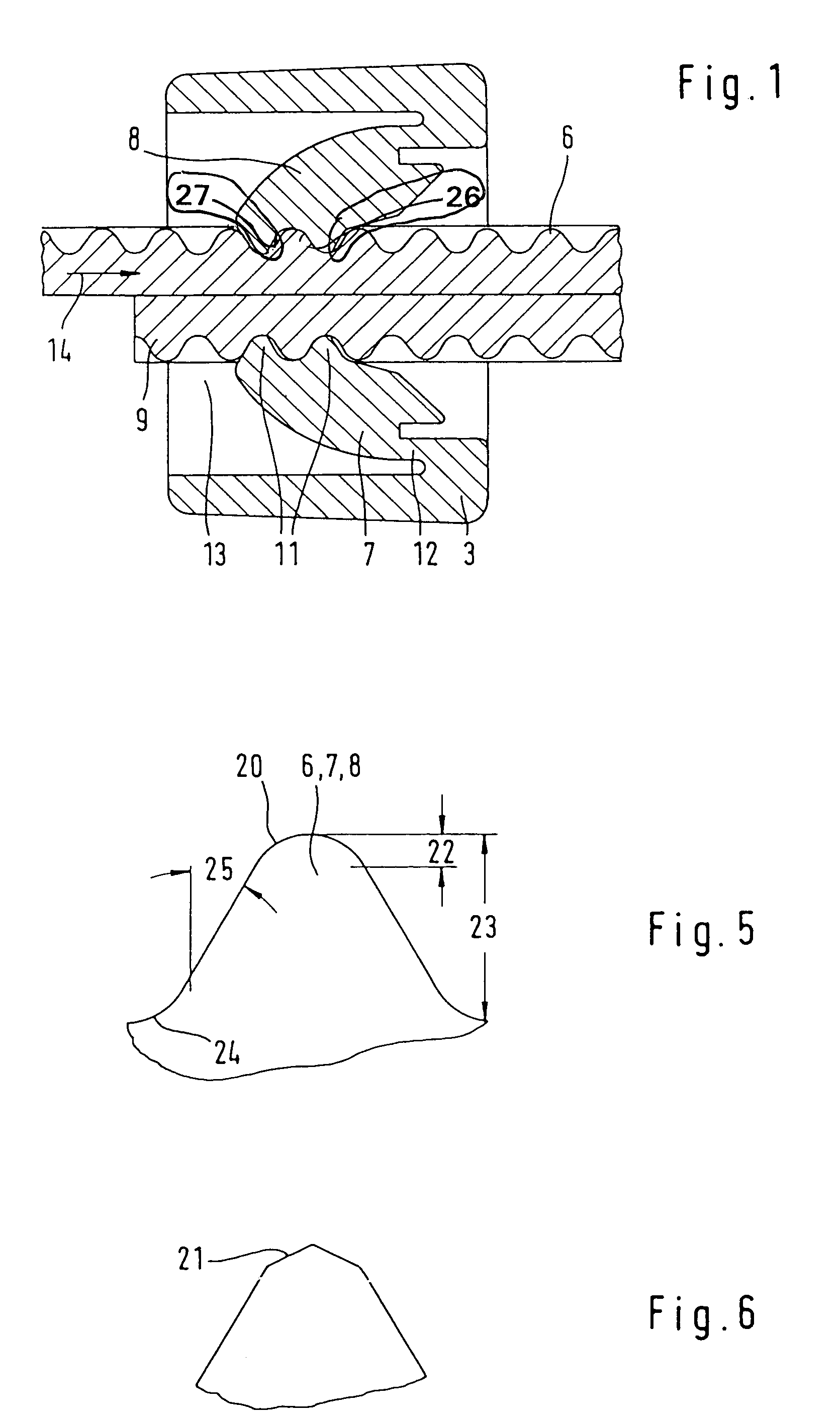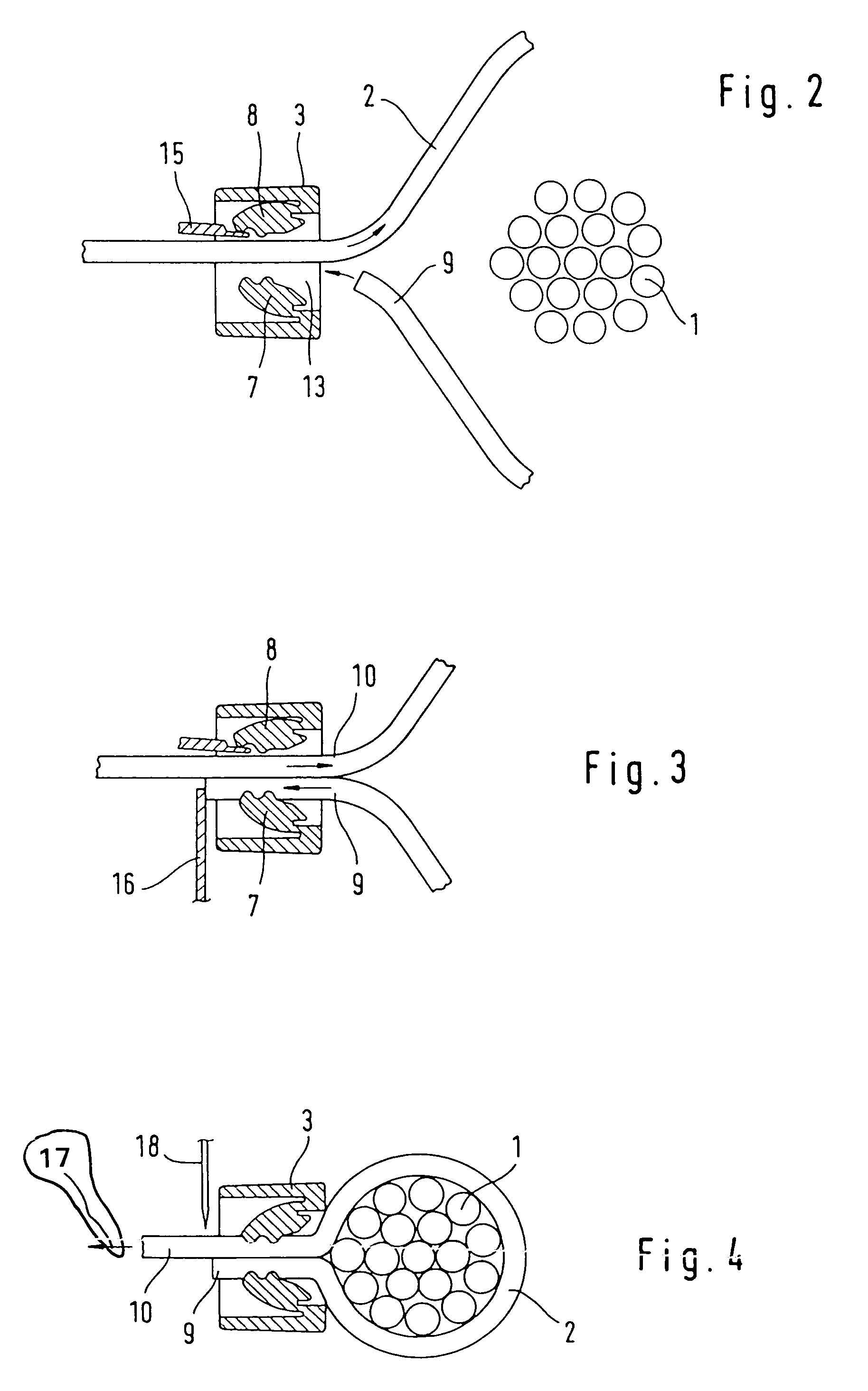Array and method for tying cable trees and the like and method for the production of strips
a technology of tying cable trees and tying wires, which is applied in the direction of hose connections, flexible container closures, other domestic objects, etc., can solve the problems of repeated stress and possibly damage, damage to the teeth of the lock, and damage to the other side, so as to increase the reliability
- Summary
- Abstract
- Description
- Claims
- Application Information
AI Technical Summary
Benefits of technology
Problems solved by technology
Method used
Image
Examples
Embodiment Construction
[0015]An item, for example a bundle of cables 1, is to be tied by means of the strip 2 and lock 3 in the way shown in FIG. 4 (shortly before completion of the tying operation). For this purpose, a tool of the type shown in EP-A-297 337 is used. The strip 2 has teeth 6 on one side. The lock 3 contains blocking devices, which are formed by a first blocking pawl 7, which acts together with the free end 9 of the strip 2, and a second blocking pawl 8, which acts together with the end 10 of the strip 2, on which the pushing-forward members within a tying device act and which is joined to a supply of strip (not shown). For this purpose, the blocking pawls 7, 8 have teeth 11, the shape of which is made to match that of the teeth 6 of the strip. They protrude obliquely from a point of articulation 12 into the opening 13 located in the lock in such a way that they hinder the strip end 9, 10 respectively acting together with them from moving in the direction of the arrow 14. Although the teeth...
PUM
| Property | Measurement | Unit |
|---|---|---|
| Angle | aaaaa | aaaaa |
| Mass | aaaaa | aaaaa |
| Height | aaaaa | aaaaa |
Abstract
Description
Claims
Application Information
 Login to View More
Login to View More - R&D
- Intellectual Property
- Life Sciences
- Materials
- Tech Scout
- Unparalleled Data Quality
- Higher Quality Content
- 60% Fewer Hallucinations
Browse by: Latest US Patents, China's latest patents, Technical Efficacy Thesaurus, Application Domain, Technology Topic, Popular Technical Reports.
© 2025 PatSnap. All rights reserved.Legal|Privacy policy|Modern Slavery Act Transparency Statement|Sitemap|About US| Contact US: help@patsnap.com



